If you know me, then you know I am PASSIONATE about composting. We just moved, and are waiting for our apartment complex to finish their resident composting program.
While I’m waiting, I didn’t want to put my food scraps in the landfill so I decided to build a compost bin. It was such an easy and cheap DIY so I’m going to show you how you can build one too.
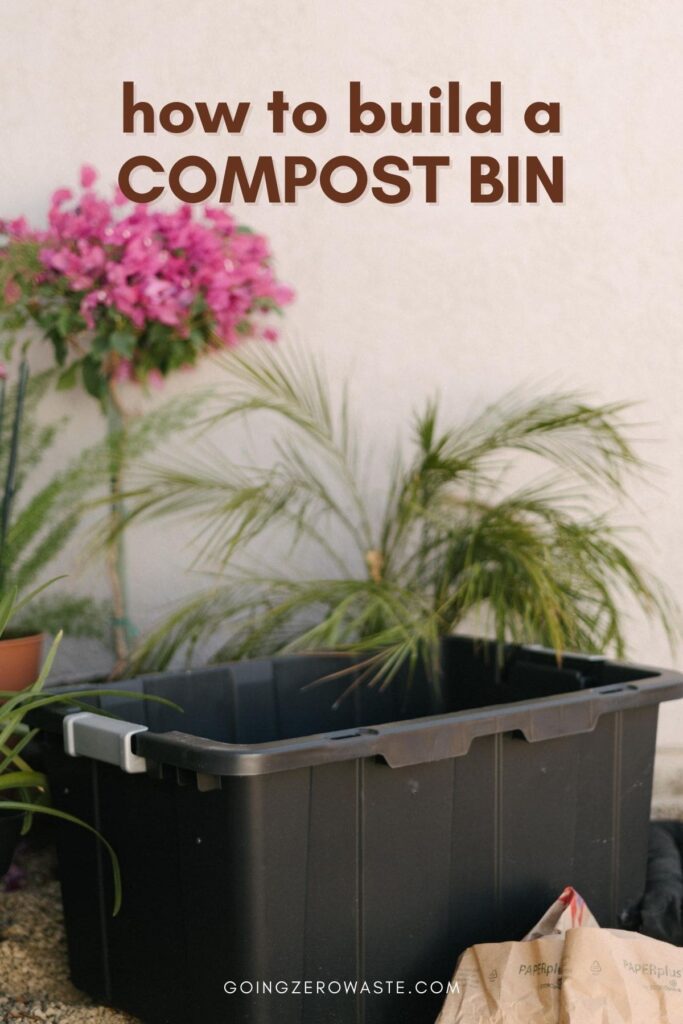
I built this compost bin on a budget – under $15 to be exact. You’re going to need a plastic tub with a lid.

You can use an extra one you have, grab one from a thrift store, or pick one up pretty cheap from most stores, but definitely to try and source on secondhand if you can.
why it’s important to build a compost bin:
If I could shout one thing from the rooftops and have everyone listen I would scream, “FOOD SCRAPS DO NOT BREAK DOWN IN LANDFILLS!”
Organics can’t break down in a landfill because landfills are designed for storage, not decomposition. There’s no oxygen in a landfill which is vital for the decomposition process.
Instead of decomposing, organic matter like paper, wood, and food scraps are stuck in a limbo state releasing methane, and methane is a gas 30x more powerful than carbon!
I saw ‘more powerful’ because methane stays in the atmosphere longer and absorb heat more effectively making it more damaging than co2.
In fact, 16% of ALL methane emissions in the US comes from landfills! Making food waste, if it were a country, the third-largest emitter of greenhouse gas emissions behind China and the U.S.
So, if you want to make a serious impact and reduce 50% of your household waste with just ONE swap, start composting!
I’ve written two wonderful blog posts on the topic A composting guide for apartments which can be done even if you don’t have a balcony as well as a guide to backyard composting.
Make sure you check out those posts for tips on maintaining your compost and finding which compost bin would work right for you.
The bin I’m building is meant to live outside on a porch or balcony, but you can move it inside if you get worm.
Worms are optional, but they will absolutely help speed up the decomposition process.
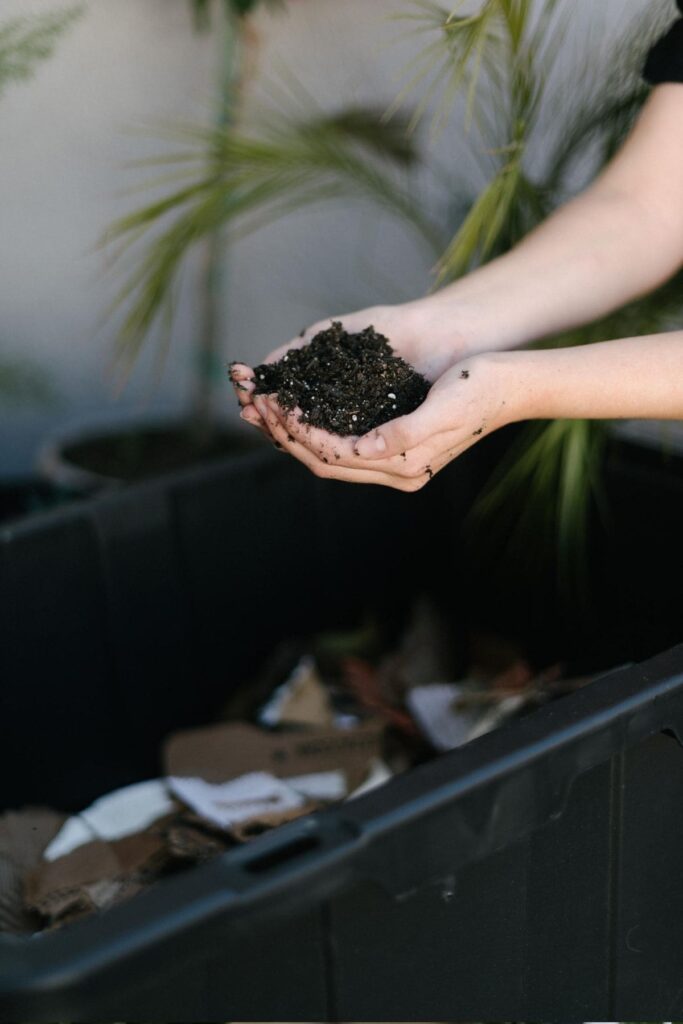
what you’ll need to build a compost bin:
- plastic storage bin with a lid
- drill
- shredded paper and dried leaves
- soil
- food scraps
- cardboard cover
- worms (optional)
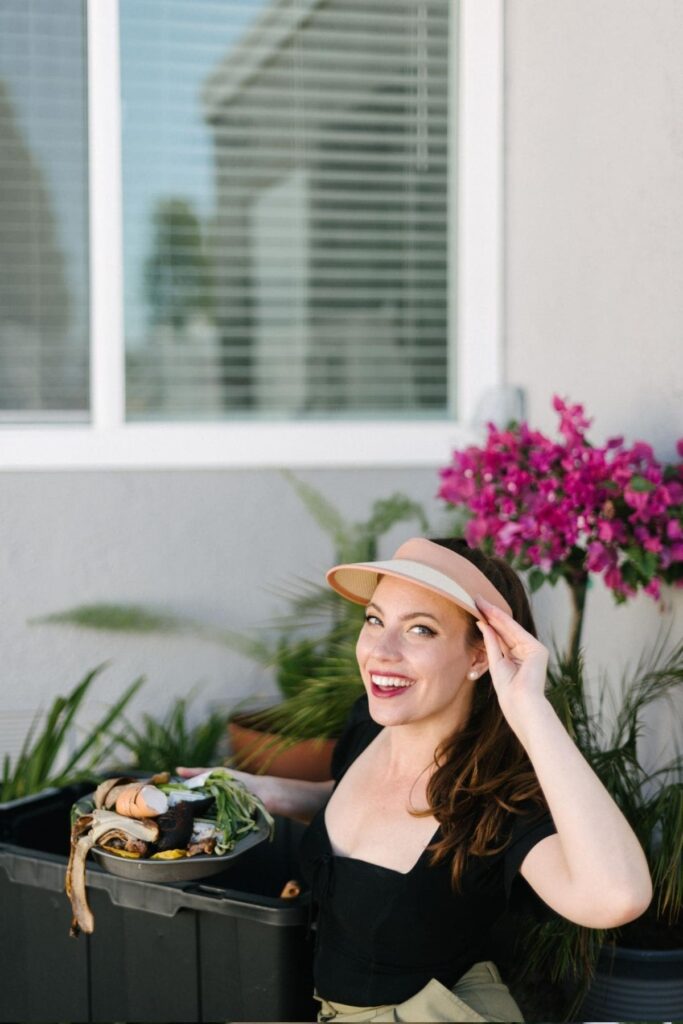
step 1:
The first thing you want to do is create some airflow. Remember, oxygen is vital for food scraps to break down!
So let’s make sure some sweet, sweet air can flow in and out. Drill 10-12 holes, evenly spaced out in the bottom of your bin.
You’ll also want to drill some holes and near the top of the bin on all four sides 10-12 evenly spaced should do thee trick.
Using a drill will make this step VERY easy, but if you don’t have one, like me, you can also use a hammer and a screw driver. It worked perfectly.
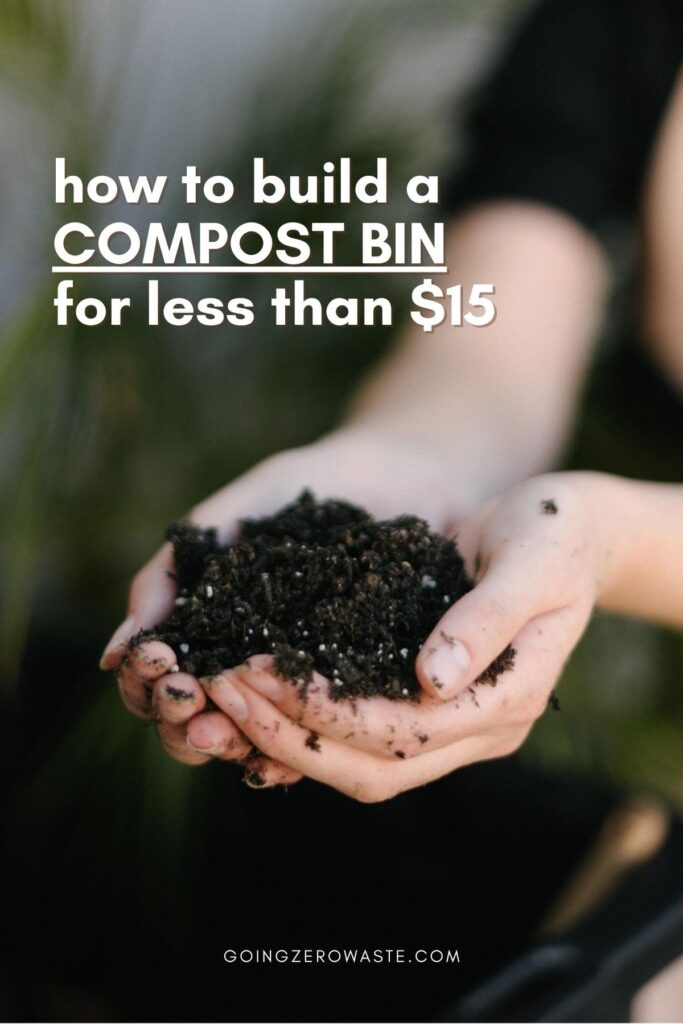
step 2:
Now, you want to set the stage for your compost. In the bottom, you’re going to put 1-2 inches of dried leaves, shredded paper, or shredded cardboard.
This is a great way to get rid of sensitive documents. Shredded paper is not recyclable loose in your curbside bin so instead of sending it to the landfill why not turn it into soil?
Related: How to Recycle Paper – The Right Way!
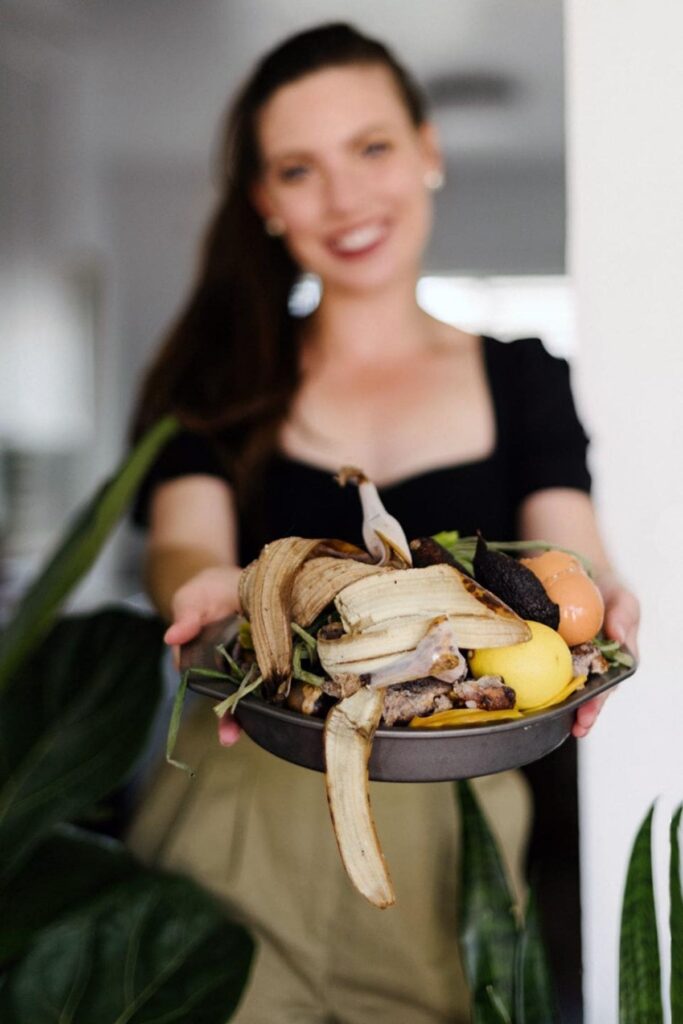
step 3:
After you’ve layered in your paper mixture, it’s time to add some soil. I used regular potting soil, but I’m sure whatever you have handy will work just fine.
Pour 1-2″ of soil in your bin to help kickstart the decomposition process. When you place your food scraps into the bin, you can coat them and nestle them into the soil to speed up decay.
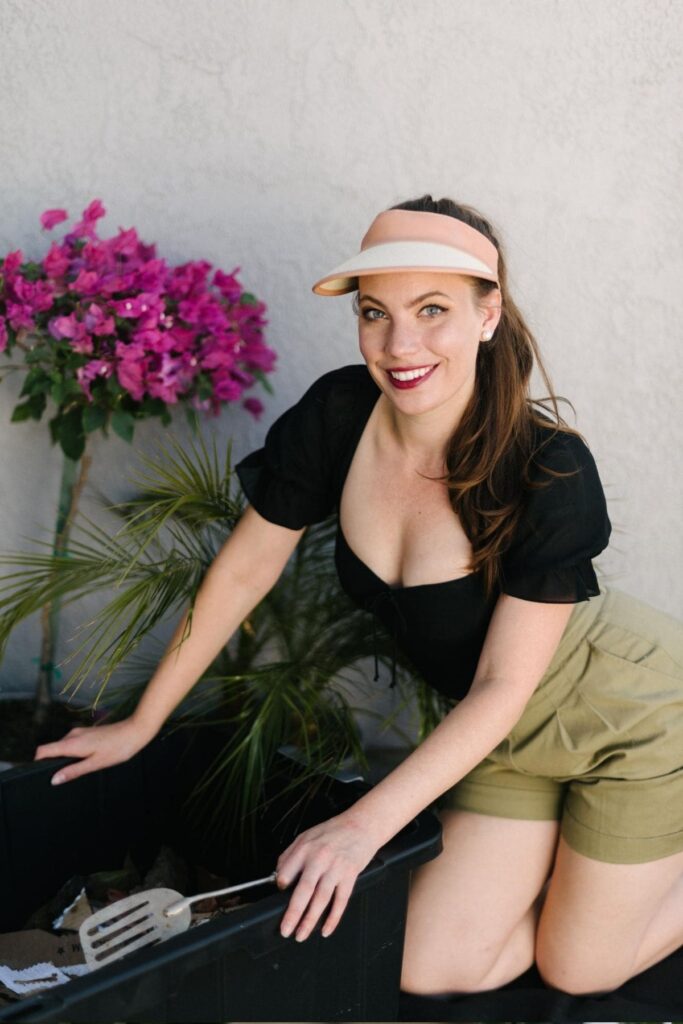
step 4:
Add your food scraps! I like to keep my food scraps in the freezer and bring them to the bin every few days.
You’ll want to avoid adding meat, bones, dairy, processed sugars, refined grains and oil. Try to keep it to raw fruit and veg scraps for best results.
For more information on what you can and can’t put in your backyard compost bin be sure to check out my blog post The Ultimate Guide to Composting.

step 5:
Get some red wrigglers! Adding worms is completely optional, but they’ll definitely make the process speedy.
If you’re adding worms, you’ll need to make sure that your bin stays in a temperate environment. Worms like to be in mild temps around 40F – 80F and honestly – same.
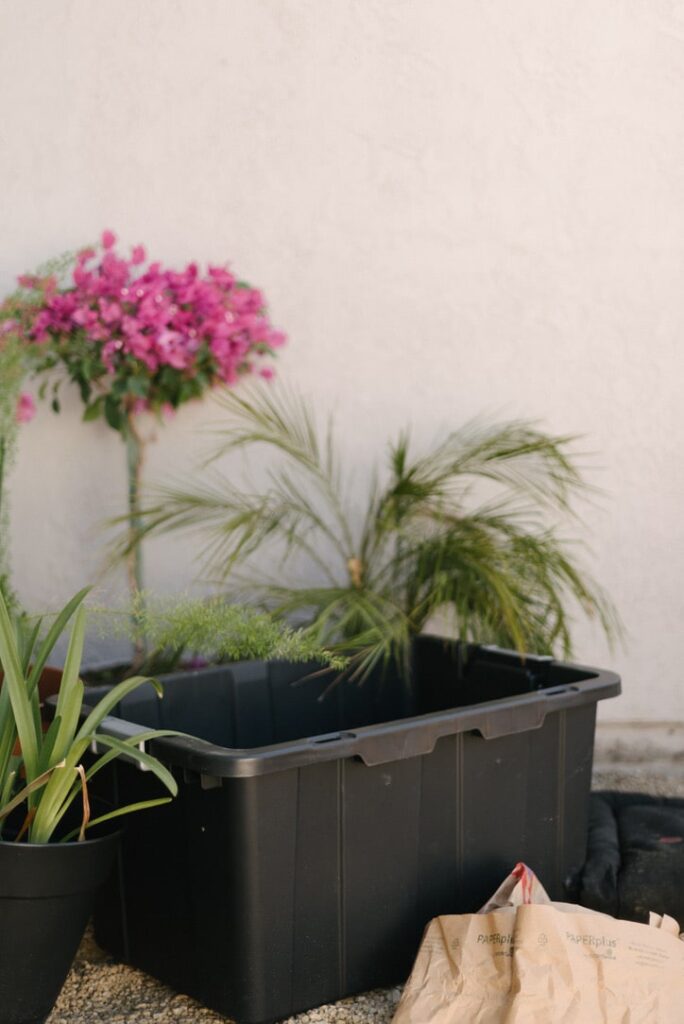
step 6:
Now that you have your bin all set-up, it’s just time to maintain it. When it comes to composting, you want to keep a good mixture of food scraps and paper. 50/50 is a really good goal.
Every week you’re going to want to water your compost pile, and mix it up.
I use an old spatula to toss my food scraps around make sure that I’m keeping everything nice and combined.

step 7:
Over time, your food scraps will break down into a nutrient rich soil. You can use your compost for your house plants or garden.
If you don’t have a garden or house plants, list your compost on craigslist, freecycle, bunz app, or a buy nothing group. I promise it will be snapped up QUICK!
For more tips be sure to check out my blog post How to Compost in an Apartment.
Do you compost? What type of bin do you have? If you don’t compost, what’s holding you back? ⠀
The post How to Build a Compost Bin | Easy and Cheap DIY appeared first on Going Zero Waste.







